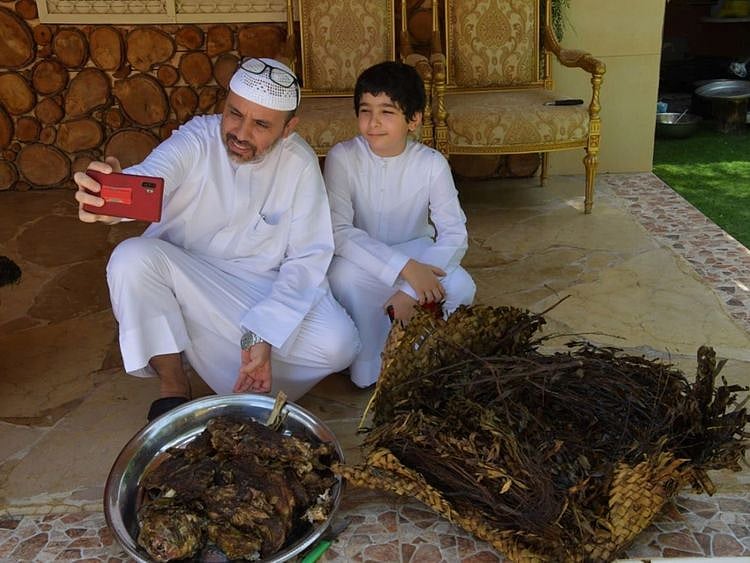Taste of tanoor: Emirati cooking at its traditional best in rural UAE
A deep well, 24 hours of slow cooking and over 30 goats are part of the special experience

Also In This Package
Top 3 leading vaccines from China: Phase III trials
Your SIM card could be used to steal your money
See how UAE became hub of global humanitarian response
See how UAE’s first nuclear energy plant was built
UAE: ‘Bank re-issued credit card without Emirates ID?’
Dubai's city walk turns into live Art Festival
Dubai: The picturesque mountains of the UAE and Oman are home to breathtaking scenery, as anyone who has visited these areas will readily testify. They are also home to several local tribes, with unique traditions and customs of their own.
Cooking is one of the time-tested traditions among the tribes. On community occasions, some of these traditions come to the fore, as is witnessed by communal cooking, using an traditional method unique to the mountains of the area.
Also Read
Dubai’s cool beach vibes: From water sports to going for a swim people enjoy their weekend by the sea One-off Rolls-Royce Horology Phantom is in Dubai!UFC Fight Night finale in Abu Dhabi: Full resultsVisit these heritage homes of the UAE now converted to hotels and museumsCommonly called a Tanoor, an “underground oven”, the procedure requires a two-metre-deep stone well in the ground and over 24 hours of cooking time. The prolonged process has traditionally attracted a large crowd, creating an event out of the cooking process itself.
Sultan bin Mejren, the founder of Samawy Expedition, a non-profit organisation specialised in filming nature and historical videos around the region, visited a tanoor over the last Eid weekend in Hatta where he witnessed the unique process. “On Eid Al Adha, we have a special tradition, the tanoor. It is a process that have been passed on for generations in the UAE and Oman,” he added.
The process
On the day of the cooking, each family in the village would bring their own meat, traditionally goats in the UAE, and apply spices according to each home’s personal recipes. Some families prepare the spices for weeks before the event. The meat is then wrapped in leaves. In the UAE, they use Al shoo’ and Al shakhs, which are commonly found in the mountainous areas. Other regions often use banana, mango or lemon leaves. The wrapped meat is then placed in individual baskets made of palm tree leaves. Considering the large amount of meat being cooked — often around 20 or 30 goats — each family would place a unique mar on their own basket to ensure that it is identified easily later.
Inside a deep well, a fire is started six hours earlier, with a specific species of wood. The samr tree, common in the desert and mountains, is usually used for the fire as it delivers a special taste. Families then begin to toss their baskets of meat inside in the tanoor oven, which is then immediately covered with a lid to allow the fire to simmer. It is then buried under piles of sand to ensure that the oven is completely sealed away.
“Heat without flame is the desired cooking method. Every few hours, there is an inspection to check if there’s any leak in the oven which shows how unique this process is,” says bin Mejren, “Any leak of air through the lid could mean the fire will start again. The oven is checked from the outside to ensure there’s no smoke.”
After 24 hours of cooking, the village gathers again the following day to receive their cooked meat. Using long metal hooks, each basket is lifted and wheeled away by the families.
The meal is commonly consumed on special occasions especially Eid Al Adha as large quantities of meat being shared. A portion of the meat cooked in this process is traditionally distributed to those in need around the village.
The slow-cooked meat, with the special taste of firewood and unique spices, is frozen for many days to come as the cooking method creates a very tender meat that is a much-sought after delicacy in the region.
Sign up for the Daily Briefing
Get the latest news and updates straight to your inbox
Network Links
GN StoreDownload our app
© Al Nisr Publishing LLC 2025. All rights reserved.